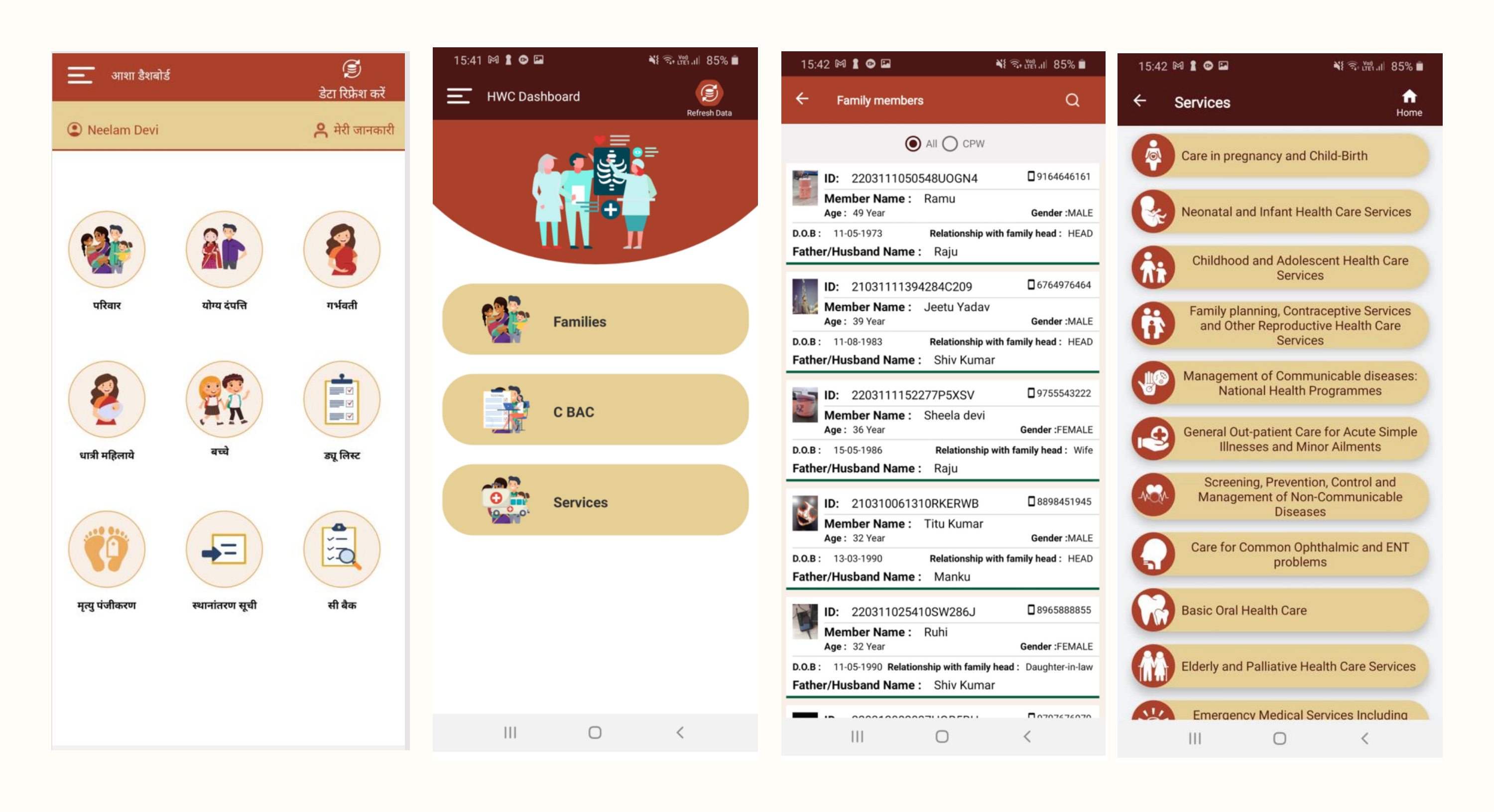Scope
Aligned with the vision of WISH Foundation to scale-up high-impact innovations in order to make quality primary healthcare accessible and available to underserved populations, Tattva Foundation aims to assist WISH develop, evaluate, and operationalise innovative information communication and technology (ICT) tools catering to the needs of public health delivery system, clinicians, public health managers, health workers, and beneficiaries. Tattva, through this assignment aims to assist WISH, develop:

Objective
- INTEGRATED health and wellness information system to enable digitization of household and family census, creation of longitudinal community electronic medical records, automation of clinical work-flows with integrated patient-aware clinical decision support systems, along with inventory, and drug management, linked to
- TELEMEDICINE CENTRAL HUBS located at community health centres, district hospitals, medical colleges, or other centres of specialist medical advisory to provide real time doctor-to-doctor or doctor-to-nurse audio-video consultation using common shared electronic medical records to improve overall quality of care by ensuring availability of timely specialist advice, informed clinical decision making, and enhanced user experience and satisfaction.
- INNOVATIVE TRAINING AND MONITORING tools to facilitate adoption and use of technology by frontline health workers, clinicians, and health officials for health-system’s continued value creation,
- ARTIFICIAL INTELLIGENCE powered data analytics (proactive and reactive), visualization, reporting, alerts and reminders system to improve patient identification and tracking, provider and health system decision making, and beneficiary awareness and knowledge.
- COMMUNITY ENGAGEMENT AND ACCOUNTABILITY ecosystem to keep community informed and involved in provision of health care delivery and related decision making to bring about transparency, reduce delays and defaults, and improve service quality and health outcomes.
Specific Objectives
- Develop a comprehensive health and wellness center information system integrating EMRs and HIS to assess facility gaps, digitize household data, automate service delivery, and ensure interoperability.
- Establish telemedicine hubs linked with the integrated system.
- Assist health system training with on-demand digital content and tailored user assistance.
- Strengthen data utilization with centralized data-sinks, clinical decision support, interactive visualizations, and automated health messaging.
- Embed an entitlement approach to public healthcare to ensure equitable access for all.
Solution Developed
In this project, we delivered a range of solutions and modules tailored to different user levels:
- For Block/District/State level users (CMOs, Program Managers, State Officials), we provided visualization dashboards, gap analysis analytics, delivery/target-achievement analytics, referral analytics, entitlements and financial accountability analysis, and client satisfaction meters.
- At the Primary Health Centre (PHC) level, which includes medical officers, lab technicians, and pharmacists, we implemented the HWC PHC application for web-based and online-offline usage. This included service delivery functionalities such as doctor consultation and diagnosis, integrated pharmacy and lab tests, referrals, tailored beneficiary counseling, and telemedicine video consultations with the command center.
- For Sub-Centre (SC) level users like ANMs and Community Health Officers (CHOs), we developed the HWC SC application for Android-based online-offline usage. This included service delivery features like health screening, OPD and delivery care, medicines, referrals, tailored beneficiary counseling, and telemedicine video consultations with the command center.
- At the village (community) level, ASHAs utilized the HWC ASHA application for Android-based online-offline usage. This included population enumeration linked to ANMOL, home visits, follow-up visits, and tailored beneficiary counseling.
We utilized open platforms such as Bahmni, FOSS Android, and technologies like WebRTC for real-time audio-visual communication, R-Shiny and Python for AI-enabled centralized data sync, visualizations, reports, and dashboards, and IVR/SMS/WhatsApp gateway for on-demand training and learning content, alerts, and reminders.
